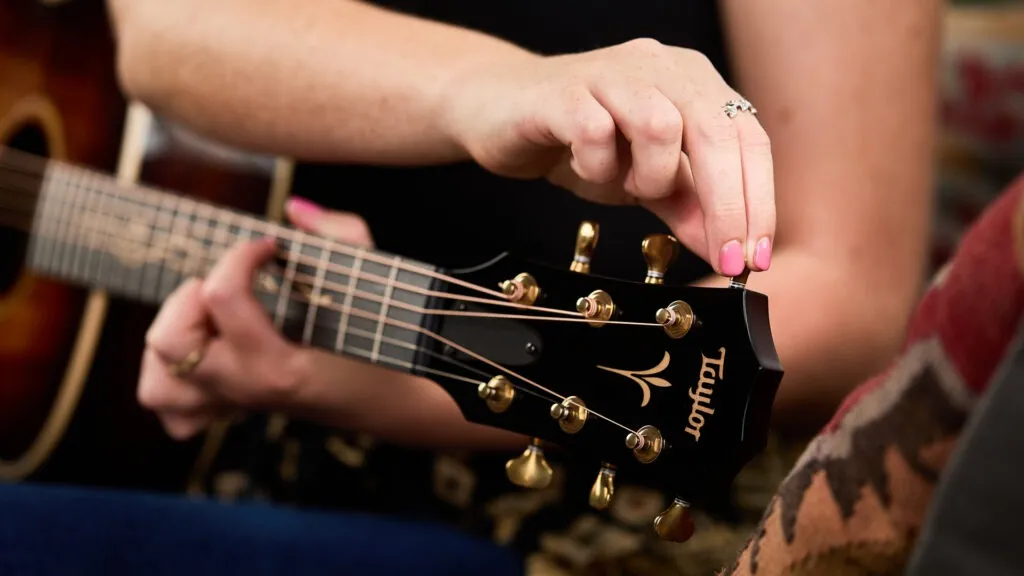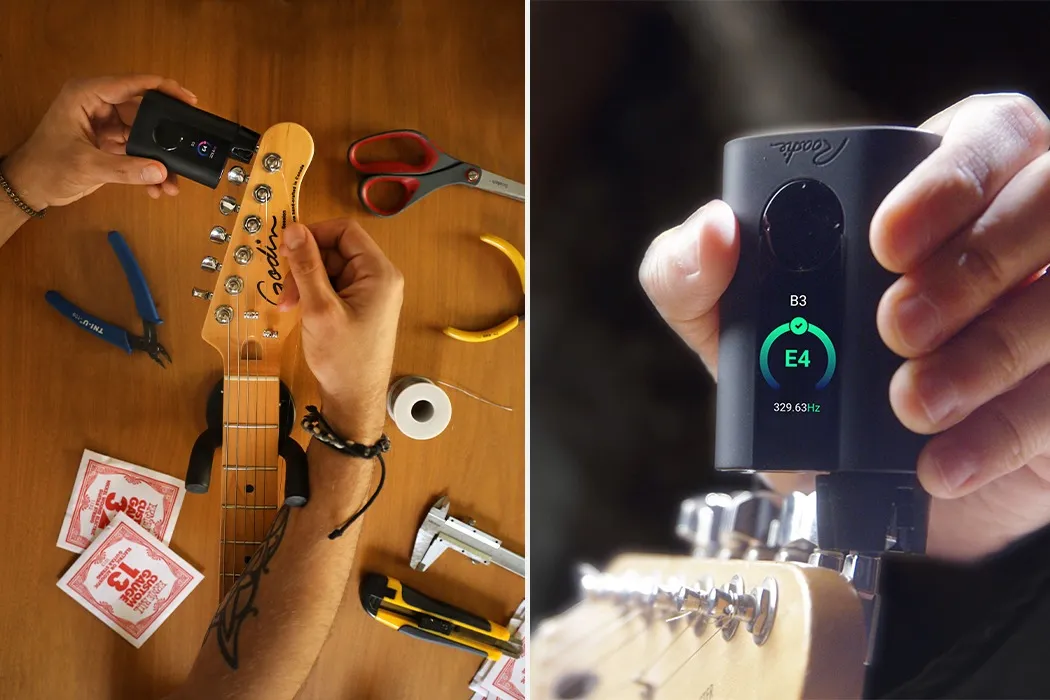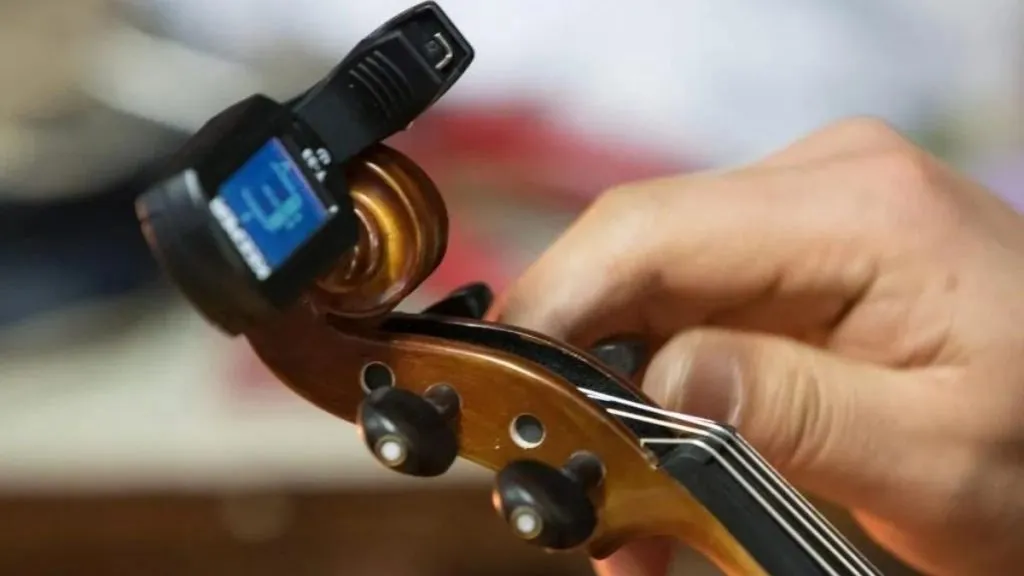Did you know that 75% of beginner guitar players struggle with tuning their instrument? Don't worry, you're not alone! How to tune a guitar for begginers can be intimidating at first, but with a little practice and guidance, you'll be able to tune your guitar like a pro. In this article, we will walk you through the process of tuning your guitar step by step.
Firstly, it's important to understand the basics of guitar tuning. Each string on the guitar is tuned to a specific pitch which creates the desired musical notes when played. To achieve this, you can use a variety of tools such as tuning devices or smartphone apps.
We will guide you through tuning each string starting from the low E string all the way up to the high E string. Along the way, we will provide tips on how to fine-tune and check your tuning for accuracy.
By following our instructions and practicing regularly, you'll soon develop an ear for proper tuning and gain confidence in your ability to keep your guitar sounding great. Let's get started on this exciting journey of mastering guitar tuning!
#1. Understand the Basics of Guitar Tuning
Get ready to dive into the world of guitar tuning and let's make it fun! Understanding the basics of guitar tuning is essential for every beginner.
There are different methods you can use to tune your guitar, but the most common one is using a reference pitch like a piano or another tuned instrument. A common mistake beginners make is not knowing which string corresponds to each note, so it's important to familiarize yourself with the standard tuning: EADGBE.
Another mistake is not pressing down on the strings hard enough while tuning, resulting in an inaccurate pitch. Remember to pluck each string individually and adjust the tension until it matches the desired pitch.
Now that you understand the basics of guitar tuning, let's move on to using a tuning device or app for more accuracy.
#2. Use a Tuning Device or App
Utilize a tuning device or app to easily fine-tune your instrument. Regular guitar tuning is important to ensure that your guitar sounds its best and stays in tune while you play. There are different types of tuning devices available, such as clip-on tuners, pedal tuners, and smartphone apps.
Clip-on tuners attach directly to the headstock of your guitar and detect vibrations to determine the pitch of each string. Pedal tuners are larger devices that sit on the floor and can be used with an electric guitar or bass. Smartphone apps use the microphone on your phone to listen to the sound of each string and provide visual feedback.
With a tuning device or app, you can quickly and accurately tune your guitar before playing.
Now let's move on to how to tune the low e string...
#3. Tune the Low E String
Ironically, the deep rumble of the low E string can transport you to a world where thunderstorms and rock anthems collide. To ensure your guitar is perfectly tuned, it's important to pay attention to this string.
One common mistake beginners make is not applying enough pressure when plucking the string, resulting in an inaccurate pitch. Another mistake is twisting the tuning peg too much or too little, causing the string to be either too sharp or flat.
If you don't have a tuning device or app at hand, there are alternative methods for tuning the low E string. You can use a piano or another properly tuned instrument as a reference point.
Once you've mastered tuning the low E string, it's time to move on and tune the remaining strings without missing a beat.
Transitioning into tuning the other strings without saying 'step', let's now focus on getting perfect pitch for the A, D, G, B, and high e strings.
#4. Tune the A, D, G, B, and High E Strings
Once you've nailed the low E string, it's time to move on and fine-tune the rest of the strings for that perfect pitch. To tune the A, D, G, B, and high E strings, you can use a technique called half step tuning. This involves adjusting each string by one fret or half step until it matches the desired pitch.
Be patient and take your time with this process. Common tuning problems may arise during this step. If a string is too flat or too sharp, simply turn the corresponding tuning peg clockwise or counterclockwise to adjust its tension. If you find that some strings are consistently out of tune even after adjustment, check if there are any issues with your guitar's intonation.
Now that you have tuned all six strings using the half step technique and addressed any tuning problems along the way, you're ready to fine-tune and check your overall tuning accuracy in the next section.
#5. Fine-Tune and Check Your Tuning
Source: Youtube
Begin by carefully checking the accuracy of your tuning, ensuring each string is perfectly pitched and aligned. To fine-tune and check your tuning, follow these steps:
- Use an electronic tuner or a tuning app on your smartphone to ensure precise pitch. This will help you avoid common tuning mistakes.
- Gently pluck each string while observing the tuner's display. Make small adjustments to the tuning pegs until the correct pitch is achieved.
- After adjusting all strings, play a few chords or notes to confirm that they sound harmonious together. This will help you identify any remaining inconsistencies in your tuning.
- While playing, be mindful of how your guitar is affected by temperature changes and humidity levels, as they can cause strings to go out of tune more easily. Consider investing in a good quality guitar stand or case that provides proper protection against environmental factors.
By following these tips for maintaining proper tuning while playing, you'll be able to enjoy a consistently well-tuned guitar and avoid frustrating intonation issues during practice or performances.
Conclusion
In conclusion, how to tune a guitar for beginners is an essential skill to master. By understanding the basics of guitar tuning and using a reliable tuning device or app, you can ensure that your guitar is in tune and ready to play.
While some may argue that it takes too much time and effort to tune a guitar, remember that proper tuning enhances the sound quality and overall playing experience. So take the time to tune your guitar regularly, and enjoy the beautiful music you'll create!
If you're interested in this post, visit Meme Funny to keep up with the latest Music news.
Maybe you are interested:

Top Acoustic Guitar Songs For Beginners

How To Care For Your Musical Instrument: Essential Tips









